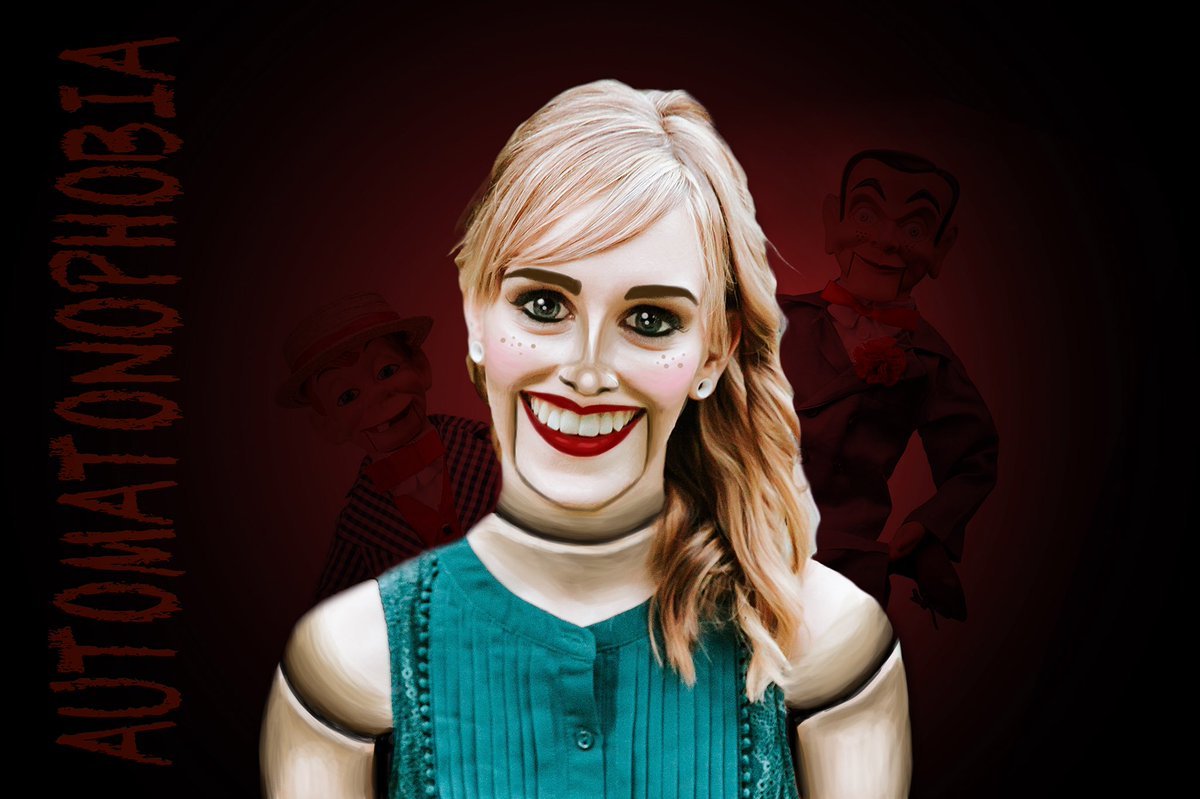What Is Automatonophobia?
Automatonophobia is the fear of automatons, wax figures, humanoid robots, audio-animatronics, or other figures designed to represent humans. Considered a hallmark of new technology, vending machines are proudly displayed in many places, from museums and theme parks to carnivals.
Autophobia is a specific phobia that is an irrational fear of something that is not inherently dangerous.1 Although it is relatively common to get nervous around humanoid figures (called the uncanny valley) Phobias disrupt a person's life.People with phobias develop maladaptive coping mechanisms to avoid the object of fear.3
This article explains what automatophobia is, its causes, symptoms, and complications. Learn how doctors and psychiatrists diagnose this phobia and the most common treatments for phobias.

Symptoms of Automatonophobia
This fear might take many different forms. Some people's only doll or wax figure phobias are dolls. Some people are unable to visit theme parks or other attractions that feature audio-animatronics, or moving humanoids, in their displays.
If you have automatonophobia, you get extremely anxious whenever you see, hear, or even think about the thing you're afraid of.
When confronted with the source of your fear, you could additionally suffer physical symptoms such as trembling, sobbing, heart palpitations, and others. It's possible that an automaton-filled show will be off limits to you.
Diagnosis of Automatonophobia
According to the Diagnostic and Statistical Manual of Mental Disorders (DSM-5), 5th edition, health care providers should use the following criteria to determine if someone has a diagnosable phobia .
- The person experiences an irrational fear that is out of proportion to the actual danger.
- Anxiety can seriously disrupt your daily life (resulting in disruptions to your work, relationships, and personal life).
- Demonstrates avoidance behavior to avoid the object of fear.
- Anxiety and associated behaviors have persisted for at least 6 months.
- Doctors can also evaluate whether the person has a coexisting mental disorder that causes the phobia. Certain phobias often coexist with other anxiety and mood disorders.
Causes of autophobia
Phobias have many different causes, including: 7
You had a negative experience or trauma with the object of fear.
You inherited a phobia (phobias have a genetic influence).
You learned to fear the subject (i.e. had a parent with that fear).
Automatonophobia can be influenced by our own innate expectations of human behavior. Whether programmed to move and talk, or stand silently, automata look and behave like humans.
In general, it is common to feel uncomfortable around human replicas. Many characters, mannequins, or robots resemble humans, but we have an innate perception that they are not real, and we often feel uncomfortable and uneasy about them. Automatonophobia is often associated with muscaphobia, the fear of masks. Pediatric phobia, or fear of dolls, is also related to autophobia.9
It is not always clear how fears develop into phobias. However, the reasons listed above (trauma, genetics, conditioning) may increase the risk of developing certain phobias. Additionally, if you have a mental illness, such as an anxiety or mood disorder, you may be at a higher risk of developing a phobia.
Role in popular culture
Automatonophobia has been exploited in numerous books, TV shows, and movies. Perhaps the most famous example is the original version of Vincent Price's House of Wax. Originally shown in 3D for added effect, the 1953 film focuses on a vengeful wax figure artist.

Automanotophobia treatment
Automanotophobia is treatable. The exact course of treatment will depend on the specific symptoms, their severity, and the impact the phobia is having on your life.
Therapy
Cognitive-behavioral therapy (CBT) is a common treatment used for conditions such as anxiety and depression. It helps replace negative thoughts about automata with more rational messages.
You can also try systematic desensitization with gradual exposure to the object of fear under the supervision of a therapist.
Some people with phobias find hypnotherapy useful.12 Typically, we work with a hypnotherapist to develop suggestions and goals such as: The therapist will pass these suggestions on to you and repeat them while you are in a meditative state.
The idea of hypnotherapy is that the subconscious mind picks up the message that you want to embody yourself so that you can overcome your fear response to the object of fear.
If you are seeking treatment for autophobia or any other phobia, be sure to choose a therapist you trust. It's okay to see a few different therapists until you find one you feel comfortable with.
You can even call your therapist ahead of time to ask what to expect during the session, so you can feel more comfortable attending.
Medication
Your doctor may recommend drugs to take during treatment. Some medications can help reduce anxiety and make it more manageable once you learn to manage it long-term.
Common medications prescribed for people with certain phobias include antidepressants such as selective serotonin reuptake inhibitors (SSRIs). Examples of SSRIs are Prozac (fluoxetine) or Zoloft (sertraline). Alternatively, your doctor may recommend a selective serotonin norepinephrine inhibitor (SNRI), such as Effexor (venlafaxine).
Other drugs prescribed for phobias include tricyclic antidepressants (TCAs) such as tofranil (imipramine) and anafranil (clomipramine), or anti-anxiety drugs such as klonopin (clonazepam) and xanax (alprazolam).
It's important to note, however, that benzodiazepines such as Xanax have a high potential for misuse and addiction. They are meant only for short-term use and a person should be under a doctor's supervision while taking Xanax.
Coping With Automatonophobia
There are ways you can practice on your own to cope with the day-to-day stress you experience due to a phobia. You can manage your anxiety with methods such as:
- Deep breathing: Try taking a few diaphragmatic breaths the next time you feel panic coming on. Breathe in slowly through your nose, letting your belly expand with air. Hold the breath briefly, then exhale out of your mouth, slowly, and let your belly deflate.14
- Progressive muscle relaxation: This is a form of meditation in which you focus all of your attention on one part of your body at a time. Oftentimes, anxiety tightens parts of our bodies in ways we don't realize until we pay attention. Notice any discomfort or tight muscles, breathe into those areas of the body, and envision the discomfort leaving your body.15
- Visualization: Taking a few minutes to visualize yourself in a relaxing situation can go a long way in slowing your nervous system and reducing anxiety. For instance, try picturing yourself on a quiet, peaceful beach. Notice the sounds, smells, and sensations that accompany the image—the sound of the waves, the smell of the ocean, and the feeling of sand between your toes
Note from us
Although automatonophobia can make it difficult for you to function and go about your daily activities, keep in mind that you are not alone. You can employ coping methods and tools to lessen your anxiety, such as counselling and medication. Contact a physician or other mental health specialist for guidance on how to proceed with treating your fear.


